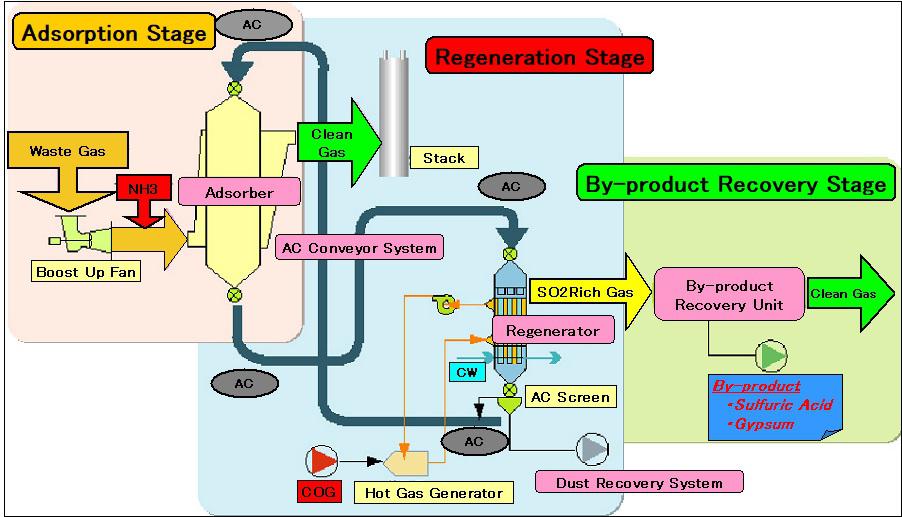November 15, 2017
NIPPON STEEL & SUMIKIN ENGINEERING CO., LTD.
NIPPON STEEL & SUMIKIN ENGINEERING CO., LTD. (Representative Director and President: Shinichi Fujiwara; Head Office: Shinagawa-ku, Tokyo; hereinafter, "NSENGI") is pleased to announce that it has reached an agreement with Sumitomo Heavy Industries, Ltd. (Representative Director, President and CEO: Shunsuke Betsukawa; hereinafter, "SHI") on the transfer of dry desulfurization and denitrification system business.
NSENGI is engaged in the sales of steel plants for applications such as ironmaking, steelmaking, rolling and processing to steel companies in Japan and abroad. The steel industry has traditionally been making active capital investment for environmental and energy-saving measures, and NSENGI has an extensive track record in coke dry quenching systems for coke ovens, waste gas heat recovery systems, gas purification systems and dust collection systems, among others. The acquisition of dry desulfurization and denitrification system business will fill the gap in offerings for sinter plants in NSENGI's product lineup.
SHI's research and development for its dry desulfurization and denitrification system technology based on activated coke dates back to the 1960s. Various improvements have been made over the years, including improved performance of activated coke and the addition of a denitrification function, and the technology has been applied to the flue gas emitted by coal-fired boilers, sinter plants, municipal waste incinerators, cement kilns and so on. The technology is firmly established today, with ten systems delivered in Japan and three overseas. The first desulfurization system for a sinter plant was delivered to Nippon Steel Corporation's (currently Nippon Steel & Sumitomo Metal Corporation) Nagoya Works in 1987.
As environmental regulations become increasingly stringent around the world, steel plants are placing greater emphasis on flue gas treatment measures. As a leading company in environmental and energy-saving technology for the steelmaking process, NSENGI is determined to help create a sustainable society by fully leveraging its global network and promoting the use of high-quality and highly reliable dry desulfurization and denitrification systems.

[For more information, please contact below]
Public Relations Section, Corporate Social Responsibility & Public Relations Dept.
https://www.eng.nssmc.com/english/contact/index.html
go to TOP